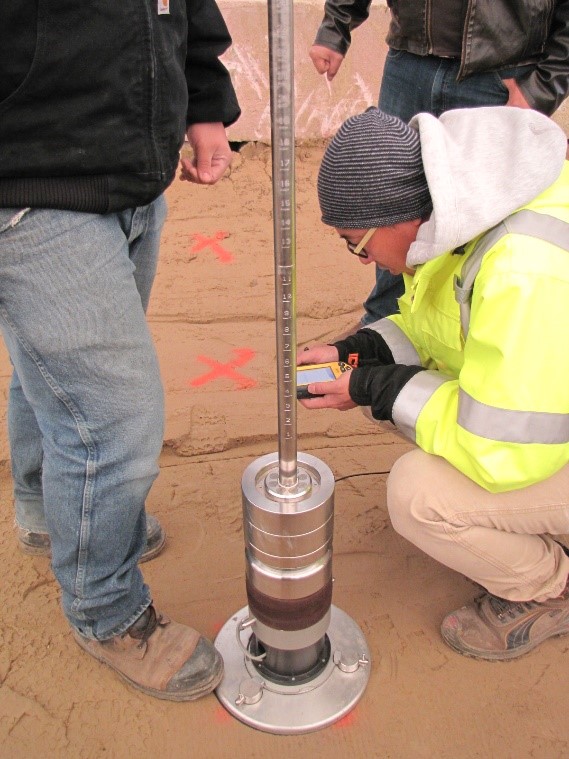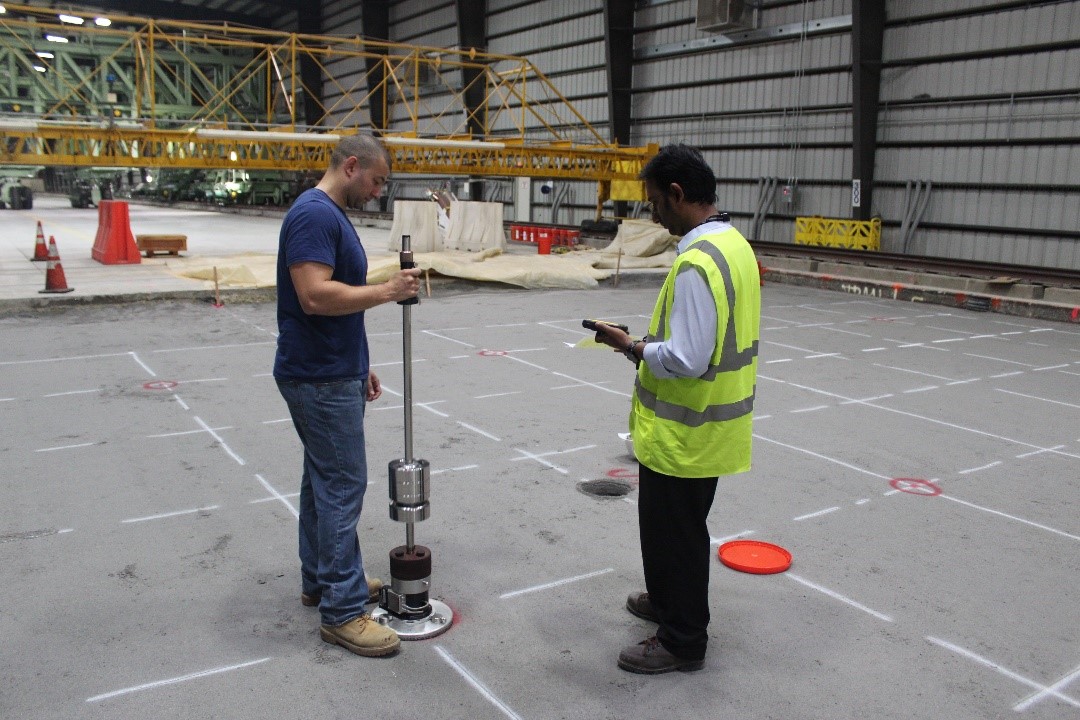Light Weight Deflectometer (LWD)

The light weight deflectometer (LWD) is a device used to evaluate the load carrying capacity of in-place unbound pavement materials and thin asphalt pavements. By dropping a known weight from a known height onto a surface and measuring the resultant deflections of the surface, the material stiffness can be determined using backcalculation techniques. This can be employed for both quality control and quality assurance (QC/QA) and structural evaluation surveys.
The system consists of a falling weight, a load plate, deflection sensor(s), a load cell, and a data processing and storage system. The LWD performs a plate-bearing test, where a load pulse is generated on a plate and transmitted to the surface. The falling weight is raised to a specified height and released to impact the base plate with the desired force. This load pulse is transmitted through the plate to the surface. A load cell mounted on the plate measures the force imparted while deflection sensors mounted on and near the plate measure the deflection of the surface. The peak load and deflection(s) are recorded and used to calculate the stiffness of the tested material.

LWD Testing in the NAPTF (Click to Zoom)
The LWD is a portable device that can be operated by one person for quick on-the-spot evaluations. Additional weights can also be added to generate higher load impulses, if desired. The system is ideal for rapid measurements either in the field or laboratory test beds.
Return to NDT Technology Overview